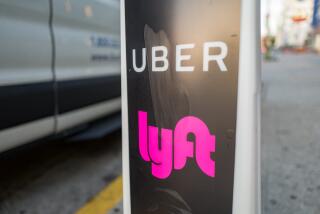Seat belt laws push use to record high; rates highest in West
- Share via
Americans are buckling up their seat belts at an all-time high rate, the Department of Transportation said Thursday.
An annual survey by the National Highway Traffic Safety Administration found that nationwide seat belt use has climbed to 86% this year from 84% last year and 58% back in 1994, when the agency first started studying seat belt use patterns. The adoption of seat belt laws in most states has increased seat belt use, the agency said.
“Thanks to the ongoing work of our state and local partners and national efforts such as ‘Click It or Ticket,’ we’ve made steady gains in belt use in recent years,” said NHTSA Administrator David Strickland. “Moving forward, it will be critical to build on this success using a multi-faceted approach that combines good laws, effective enforcement, and public education and awareness.”
Seat belt use increased the most in the South during the past year, up to 85% from 80%. The Western U.S. has the most seat belt use at 94% of occupants, up from 93% last year.
Additionally, rising rates of right front passengers buckling up are responsible for much of the recent gain, the National Highway Traffic Safety Administration said.
Transportation officials lauded the new statistics and said they want travelers to use seat belts consistently during the Thanksgiving holiday and weekend next week.
“This Thanksgiving holiday, we’re urging everyone on our roadways to buckle up – every trip, every time,” said Transportation Secretary Ray LaHood.
AAA projects 39.1 million Americans will journey by automobile 50 miles or more from home during this Thanksgiving holiday weekend, an increase of 0.6% from the previous year. The Thanksgiving holiday travel period is defined as Wednesday to Sunday, Nov. 25.
ALSO:
Electric cars don’t pencil out
Follow me on Twitter (@LATimesJerry), Facebook and Google+.
More to Read
Inside the business of entertainment
The Wide Shot brings you news, analysis and insights on everything from streaming wars to production — and what it all means for the future.
You may occasionally receive promotional content from the Los Angeles Times.










